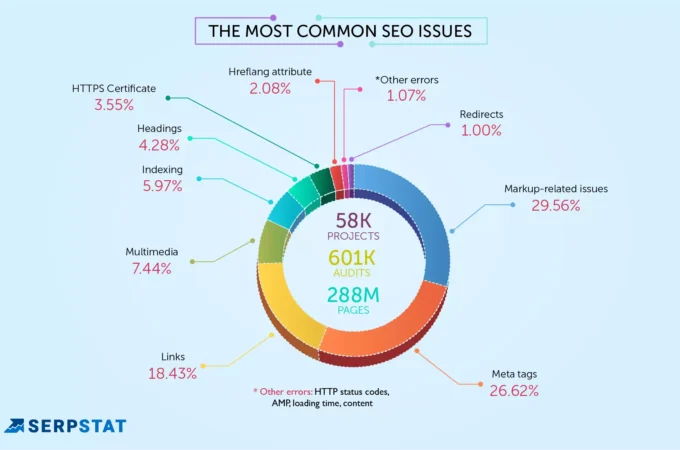The Importance of Good Web Design
Web design is a crucial part of a company’s brand. It takes less than a second for visitors to judge a website and its credibility. This is why it’s essential to have a solid visual and functional design.
The layout of a website is essential, and a good web designer will use a grid system to ensure consistency and clarity. It’s also important to clearly label links and buttons. Visit www.fullmetalmarketers.com/Boulder-Web-Design-Company to learn more.
User-friendly web design is the key to keeping your visitors engaged and building trust with your business. Today, people have high expectations for the experience of visiting websites and are not willing to tolerate slow-loading pages or poorly designed layouts. In addition, the ability to navigate a website and find the information they need quickly is also important. The best way to ensure that your website is user-friendly is to work with a web designer who understands your brand and voice. By giving the web designer a clear understanding of your vision, you can be sure that the final product will meet or exceed your expectations.
In addition, a user-friendly website must be mobile-friendly. Many users visit websites on their smartphones, so it is important to make sure that your site is easy to navigate on these devices as well. This can be done by including navigational elements such as clearly labelled links, visual cues, and clear content organization. The most effective way to do this is to create a wireframe and test it on different devices before going live.
Another aspect of user-friendly design is visual balance. This is achieved by balancing the visual weight of your website with a consistent color scheme, font selection and layout. It can also be achieved through the use of images or by using symmetrical layouts. Symmetrical balance is a good choice for websites that aim to convey a sense of calm and order.
A well-organized structure of your website can also be a benefit for businesses that need to manage and update it on a regular basis. This will help to reduce the workload for website administrators and streamline troubleshooting when problems arise. In addition, it will make the website easier to maintain and improve the overall quality of its performance.
The website of your business is the first impression that a potential customer will have of your brand, so it is important to keep it up-to-date and relevant at all times. This means adding fresh images and new content, ensuring that all the features are working properly, and conducting a regular accessibility audit.
Easy to navigate
When it comes to web design, easy navigation is one of the most important aspects. It allows users to quickly find the information they need, and can improve their overall experience on a site. This is particularly important for sites that are large and have a lot of content.
A website’s navigation should work like a map, and help visitors to better understand its content. In addition, navigation should be consistent across the entire site. The location, style, and font of a navigation bar should all be consistent. It is also important to use simple language that is easily understood by the target audience.
Providing users with an easy-to-use navigation system can increase their satisfaction with your website and encourage them to explore other pages and sections. This can lead to higher conversion rates and customer loyalty. It can also reduce your bounce rate, which is the number of people who leave a website after viewing just one page.
The best way to make a website easy to navigate is by using clear, simple text for all links. This makes it easier for users to recognize what they are clicking on and will also enhance SEO. It is also a good idea to utilize visual cues to distinguish hyperlinks, such as contrasting colors, bold formatting, or distinctive background styles.
It is also important to ensure that your navigational structure is well-structured and organized. Using topic clusters and pillar pages can help you create a structure that is both user-friendly and search engine friendly. In addition, you should avoid overcrowding your navigational structure with too many options. This will overwhelm your readers and could frustrate them. Instead, try to focus on your key messages and what you want to achieve with your website. This will give you the best chance of achieving success in the long run.
Responsive
A website should be responsive to a variety of screen sizes and devices. It should be able to adjust content and layout to fit the user’s device, ensuring that they have an optimal experience. This is an important aspect of web design because it allows businesses to reach a wider audience and stay competitive in the digital age.
Responsive websites are designed to resize and reorder HTML elements, including text, images, and layout. They use a combination of CSS and media queries to adapt to different screen widths. This allows web designers to create a single site that looks good on desktop, laptop, tablet, and mobile devices. Unlike other solutions, it does not require redirects or separate sites for different browsers or devices.
The first step in implementing responsive design is to choose the breakpoints. Breakpoints are the widths at which you implement new CSS styles using media queries. The most common breakpoints include landscape phone (576px), tablets (768px), laptop screens (992px), and extra large desktop screens (1200px).
Once you have chosen the breakpoints, you can start designing your layout. A great way to do this is by looking at existing responsive designs. For example, the NYT website has a complex layout that looks inspired by traditional newspaper columns. It is very crowded, but it also has the ability to shrink into a more compact layout for mobile devices.
Another feature of responsive design is its use of percentages. This method of displaying layout elements allows you to scale them to any size without changing their original shape. It is important to use a flexible layout when creating your site, because it will help ensure that all users can see the text.
In addition to ensuring that your website is responsive, it should be easy to update. Having to maintain two separate versions of your website can be expensive and time-consuming. Using a website builder with responsive design can help you save time and money while still maintaining a high level of quality. These tools can even provide you with a live preview of your website, so you can see how it will look on any device.
Visually appealing
A web design should be visually appealing and elicit the desired emotional response from visitors. This is done by using a combination of visual elements, such as color, typography, and graphics. Choosing the right colors is important, as each color evokes different emotions. For example, blue is associated with trust and reliability, while yellow is a happy and optimistic color. This is why it is important to choose the right colors for your website.
The layout of a website is also important. It should be organized in a way that makes sense for the site’s purpose. This will create a sense of hierarchy and order, making the website more appealing to users. Grids and layouts are effective tools for arranging content on a website, but they must be used correctly. Grids should not be overused, as they can overwhelm a user and make it difficult to navigate the website.
Another important factor is the use of contrast. This is especially true for text and images. The contrast between light and dark colors can draw the eye to the text, enhancing readability. Likewise, the use of white space is important for creating a balanced, harmonious design. White space can be used to highlight important content and call-to-action buttons.
Lastly, a website should be consistent in its design. This will help build trust and show that the designer cares about the look of the site. This includes the use of colors, fonts, and icons. The best way to achieve consistency is to create a brand style guide. This will ensure that all aesthetic elements are consistent and cohesive.
While it is important to have a visually appealing website, it’s even more important to have a functional one. A website that is hard to navigate or slow to load will cause visitors to leave in a hurry. The fastest websites are those that load in a few seconds, so be sure to test your page speed. Also, make sure your website is mobile-friendly to cater to a wider audience. The world of the internet is becoming more and more crowded by the day, so you need to be able to stand out from the crowd.


